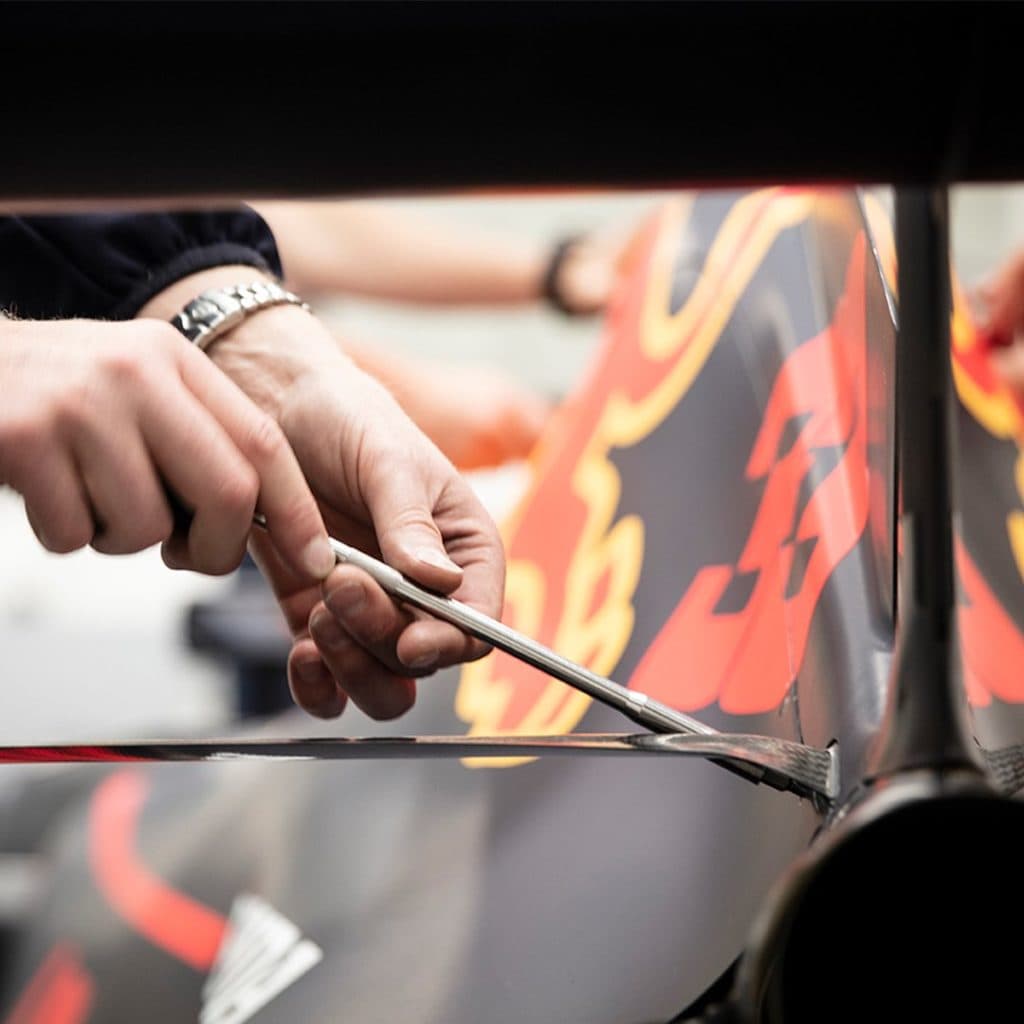The unprecedented conditions right now shed light on the questions of the future in motorsport. The coronavirus forces the bosses of motorsports to act: “We have to make ends meet for the next few months,” says DTM boss Gerhard Berger (60) to F1-Insider.com,” in order to be all the more prepared for the time after Corona.”
It is not certain when motorsport after COVID-19 can switch back to the day-to-day business. Berger: “It’s just my personal opinion: I don’t think we’ll see any races before August or even September. Not even in Formula 1.”
Berger, who clinched ten Grand Prix victories in Formula 1 for ATS, Arrows, Benetton, McLaren, and Ferrari, is currently forced to work from his office in Wörgl in Austria due to the curfew in his country. The problems of the present are easier to solve than THE big question of the future:
Does motorsport die as we know it?
The big manufacturers keep withdrawing from traditional series. This also reduces the interest of fans and sponsors. The focus is no longer on PS monsters with internal combustion engines, but on drives with alternative energies. The start of the 2020 season could mark the beginning of the last decade in which motorsport is still buzzing.
Is motorsport in a crisis because it is no longer up to date? “No,” says Berger, “but motorsport has to change and it shouldn’t be ignorant. Even though I am still a fan of the old V12 engines, they are unfortunately no longer up to date. The future belongs to hybrid and electric motors.”
Society thinks and lives ever greener. The former Ferrari star also reacts to this. The DTM is targeting the introduction of hybrid engines with an output of around 780 hp in 2022. From 2025, the world’s most popular touring car series could also drive purely electrically. A study already exists. It should be implemented as soon as possible.
But Berger’s credo stands above everything – and that applies to the entire world of motorsports: “Racing cars have to be beasts that can only be tamed by the best drivers in the world. The fans want to see that. They want to have heroes who can do things that they themselves are not capable of.”
Therefore, the pure e-cars should have up to 1000 hp and be up to 350 km / h fast. The electrical machines are powered either by a battery or by a fuel cell that converts hydrogen into electrical energy.
Berger’s DTM vision: “The manufacturers could then slip their bodies over and give the vehicles a brand face. You could present the cars on the racetrack that you also want to sell.” That was not the case with Formula E. It is quite possible that Mercedes will again see the DTM as a marketing platform alongside Formula 1.
One thing is certain: motorsport now needs visionaries!
One is Formula E inventor Alejandro Agag (49). The Spaniard broke into a gap in 2014 and launched the first purely electric racing series. What was initially called “playground for electric nerds” (Formula E driver Daniel Abt; ed.) Has now become a serious racing category. Agag is proud of having nine manufacturers in its series – including the four major German ones: Mercedes, BMW, Audi, and Porsche. From 2021 he plans to race with the Extreme E in electric SUVs at locations that are particularly affected by climate change, such as the Arctic or the Amazon rainforest.
“In my opinion, what Greta Thunberg and other activists do is very important,” he says. “Because these people have what it takes to wake up the world. But that alone is not enough. It also needs the business people and the doers. We make sure that something changes. “
What Agag does right in Formula E: he puts the green stamp on it and kept the costs comparatively low. With 20 to 30 million euros a year – also thanks to the standard chassis – the car manufacturers can easily get started.
“In my eyes, the times when horrendous sums of money are spent on motorsport are over,” explains BMW Motorsport Director Jens Marquardt. “But motorsport remains important. Formula E is a prime example. For us it is an innovation and technology laboratory.”
The former Toyota team manager, on the other hand, puts his finger in the wound at Formula 1: “When I hear that a Formula 1 team has 2,000 people for two cars today, I can imagine how much money all of this will cost. Even if the return value comes back, you have costs and they are at astronomical heights. You can no longer justify such a thing with a clear conscience. “
Formula 1 has long been trend-setting in terms of engine technology. At least that’s how Red Bull chief adviser Helmut Marko (76) sees it. He says to F1-Insider.com: “We have been using hybrid engines since 2014. This shows that Formula One was already ahead of its time. Because in my opinion, pure electric cars are only suitable for the city. If you want to drive longer distances, you need a hybrid drive that can connect petrol and electric motors. ”From 2022, bio-fuel should finally give Formula 1 a sustainable touch.
Marko has no doubt that the premier automotive class not only copes with the corona crisis but can also look to the future well-equipped. Nevertheless, he warns: “The smaller teams, in particular, must now survive the race-free time. Because fewer races mean less income. The lower travel expenses incurred by cancellations cannot cover this loss. Similar to the DTM, one option would be to run two races on one weekend when it is possible again. In difficult times like this, you have to be flexible.”
Marko’s reference to the small teams shows: Formula 1 has to step on the brakes even more. A budget limit of around 160 million euros, as it should apply from 2021, is not enough if private teams are also competitive and the races are supposed to be more exciting.
Otherwise Motorsport will die as we know it?
Ex-Formula 1 boss Bernie Ecclestone (89) gives the most appropriate answer to the question of whether Formula 1 or other racing series still have any authorization. F1-Insider.com reached him at breakfast on his coffee plantation near São Paulo, where he was intrigued to watch his chickens performing all kinds of spectacles. Ecclestone: “Was the moon landing necessary? Did it feed hunger? No! But mankind was still fascinated. People need heroes. Racing drivers, especially Formula 1 drivers, are in a way astronauts, to whom you look up with admiration. Ayrton Senna is the best example. He brought even the poorest in Brazil light and courage to live in their dark tunnel of existence.”
One should only get used to the fact that there will be less humming in the future than in the past 100 years.
Translated by David Schneider

